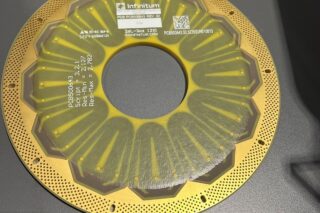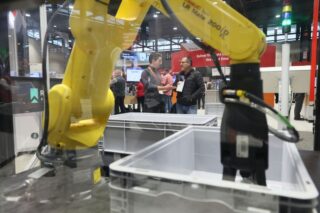Digital transformation is changing the world of work before our eyes. But in some sectors, the shift is more profound. The French government’s report La décennie numérique 2024-2030 highlights several sectors that are leading the way, from telcos to healthcare, education and even government. But industrial manufacturing is not among them. It barely gets mentioned in the report.
By Jean-Roland Brisard, VP Solution Consulting at Infor
That’s bad news, as it signifies a digital value gap at the heart of the sector—between what is promised, and what technology is actually delivering for French manufacturers and their customers. Unless urgent steps are taken to close this gap, organizations will struggle to drive the productivity and innovation gains they need to thrive in the coming AI age.
The Scale of the Challenge
Digital transformation is neither quick nor easy. But the potential of AI and big data analytics, cloud computing, industrial IoT (IIoT), 3D printing, robotics and AR/VR should excite any manufacturing leader. If used judiciously, they could help usher in a new era of Industry 4.0, revolutionising the factory floor to cut costs and waste, enhance productivity and improve business decision making.
Moreover, the technology is already here to make this a reality. Customers and partners are demanding better. And the economic pressure is on: the French manufacturing sector is predicted to grow at just 1% annually between 2024-28. Yet instead of digital transformation we often see IT inertia in the industry. In fact, manufacturing faces the biggest divide of any sector, between organizations that have embraced digital and those falling behind.
Research reveals that, when it comes to “tools for performance visibility”, the gap is 25%, while for “processes for productivity” (26%) and “technology for automation” (24%) it’s equally large. Interestingly, the gap between adopters and laggards is far shorter in an industry like food and beverage, or distribution, where the need for efficient customer interaction and traceability is more pronounced across the board.
In manufacturing, however, complex supply chains and reliance on overseas production have historically weighed heavily on efforts to embrace new technologies and business processes. The sector is saddled with legacy IT and a self-reinforcing triad of cultural resistance to change, lack of awareness about the benefits of digital, and perceived cost barriers. Skills shortages and challenges related to data integration, especially across point solutions, compound these problems.
Bridging the Divide
If they don’t address this digital value gap, French manufacturers may continue to fall behind their local and global peers in productivity, efficiency, competitiveness, innovation and growth. So what needs to happen?
It starts with technology. A corporate ERP system is the IT backbone of business operations. But this is not an area naturally suited to plug-and-play solutions. Manufacturers need a solution set tailored to their specific requirements. Vendors offering ecosystem marketplaces to enhance their own offerings, can help to meet specialized micro-vertical use cases. Cloud-based systems are also preferred, given that they’re more secure, feature the latest capabilities and enable more agile and collaborative ways of working across multiple locations.
A high degree of automation, and built-in analytics for improved business decision making, also hold advantages. With the right solution stack in place, manufacturers can enhance supply chain transparency and reduce delays, improve customer engagement, and integrate business operations for enhanced efficiency. ERP done right empowers manufacturers to navigate everything from stock shortages to geopolitical risk with confidence—benefitting current clients and attracting prospective customers.
Eyeing the future
Industries like fashion have already embraced digital change to plug a value gap related to responsible and sustainable practices. Although this was to an extent driven by the advent of the EU’s Digital Product Passports scheme and its Corporate Sustainability Reporting Directive (CSRD), there are still important lessons to learn. Cloud-based, intelligent ERP software has helped industry players to improve traceability in line with these rigorous new requirements, and in so doing, respond to customer demands for more localized and responsible sourcing. Manufacturers should take note.
It’s not all about technology adoption, of course. A mindset and cultural change are first required to ensure new projects have senior buy in. But there’s no denying the transformative potential of digital modernisation. Manufacturers that choose the right tech partners stand to gain much: in business adaptability and resilience, improved sustainability and delivery of enhanced customer experiences. It’s time to close the gap.






![Image [Best of 2025] How Generative AI Is Transforming Industry](/wp-content/uploads/sites/3/AI-4-320x213.jpg)
![Image [BUYING GUIDE] How to Choose the Right Industrial Robot?](/wp-content/uploads/sites/3/Industrial-Robot-320x213.jpg)

![Image [Buying Guide] How to Choose the Right Safety Shoes?](/wp-content/uploads/sites/3/Safety-Shoes-320x213.jpg)

